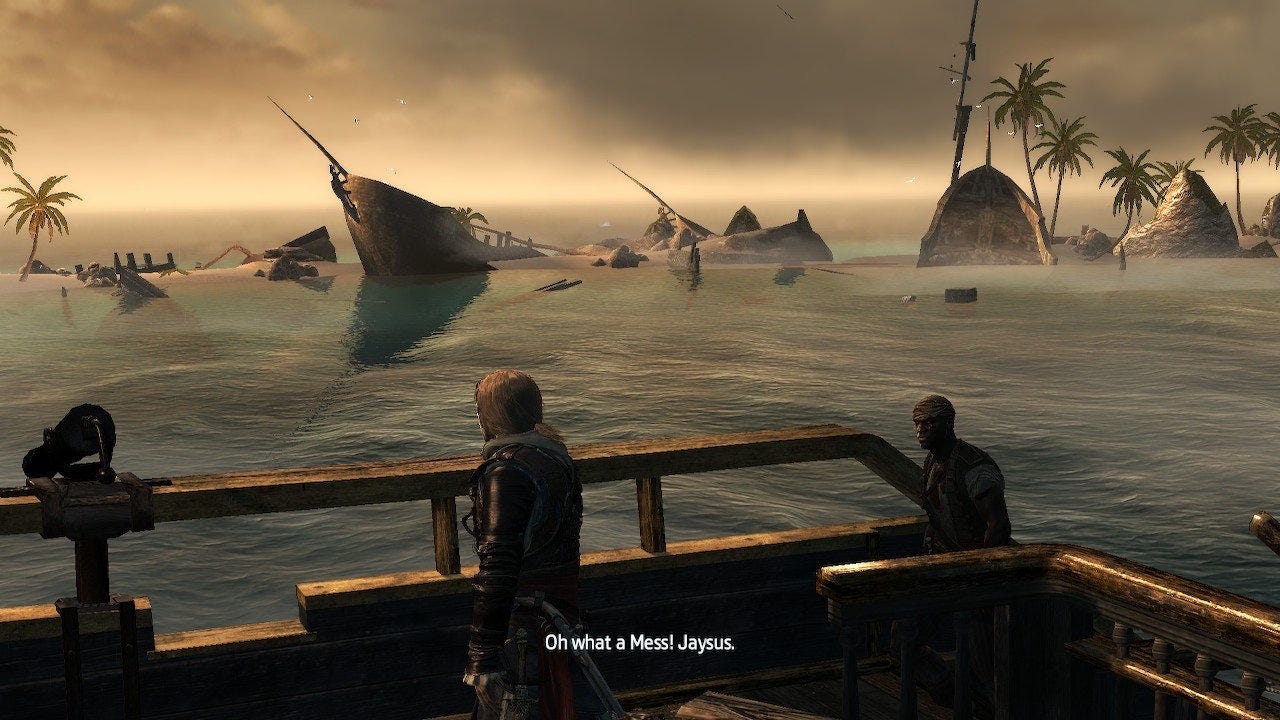Table of Contents (Vol. 2, Issue 3: Monday, Feb. 14, 2022)
Summary & Housekeeping
Feature: “Pirates’ Creed, Part 3” (~23 minute read)
Food for Talk: Discussion Prompts
Further Reading
Game & Word-of-Mouth
Footnotes
Summary: Today, we’ll conclude our historical analysis of Assassin’s Creed IV: Black Flag by comparing the game’s pivotal events and plot points to the historical events they’re based on. We’ll also ponder the paradoxical nature of pirates, and how well it ties into the franchise’s themes.
Special Thanks to Matt McLaine (aka LootBoxDad on Reddit and Twitch)—an avid gamer, streamer, and published pirate historian—for, once again, helping to fact-check this article! You can check out some of Matt’s books in the “Further Reading” section. Stay tuned for a bonus audio interview with Matt during next week’s issue!
SCHEDULING CHANGE: Starting with Volume 2, Issue 4, new issues of Game & Word will publish on Sundays, not Mondays. Hopefully, this new publishing schedule will make it easier to enjoy our content without eating into your work or school days. Game & Word will continue publishing on a weekly basis.
Previous Issues:
Feature: Pirates’ Creed, Part 3
🚨🚨🚨SPOILER ALERT!!! 🚨🚨🚨
This post contains MAJOR story spoilers for Assassin's Creed IV: Black Flag, and meta-story spoilers for Assassin's Creed as a series. You've been warned!
Ahoy, me hearties! Last week, we took a look at Assassin’s Creed IV: Black Flag’s motley crew of pirates and pirate hunters, comparing them to their historical counterparts. This week, we’ll do the same for Black Flag’s major plot points, and the historical events they’re based on.
There’s much to cover, so come on, ye landlubbers, and set sail for adventure! But be wary, for mine eyes see a storm brewin’ on the horizon…
The Storm that Sank the Treasure Fleet
After our protagonist, Edward Kenway, is identified as an imposter by the Templars (he was trying to pass himself off as a rogue Assassin, whom he himself had assassinated), they lock him up below deck of a Spanish galleon, part of the annual treasure fleet transporting gold, silver, and jewels from the Spanish Main all the way back to Spain. Edward, his future quartermaster Adewalé, and other captured pirates were to stand trial in Spain for piracy.
But fortunately for Edward, the fleet sails headfirst into a powerful hurricane, giving him the cover he needs to break free, liberate his soon-to-be crew, commandeer a brigantine, and make a clean break from the fleet. The fleet initially gives chase but is eventually wiped out by rogue waves, waterspouts, and the storm’s furiously relentless wind gusts. Edward's vessel—originally the El Dorado, but later rechristened the Jackdaw, thus becomes the only treasure ship to survive the storm.
This tracks surprisingly well with real life.
While Edward Kenway, as we've already established, is fictional, the Spanish treasure fleets were very real—and very attractive targets for pirates. And in 1715, a powerful hurricane really did sink the entire Spanish treasure fleet off the coast of Florida—save for one vessel, the El Dorado!
Unlike in the game, however—where the player steals the El Dorado—the lucky vessel had simply pulled ahead of the rest of the fleet, completely missing the storm. In fact, the El Dorado's crew didn't even realize that the fleet had wrecked until they arrived in Spain and noticed that nobody else followed!1
The great sinking of the treasure fleet, while relatively minor in the scheme of Black Flag's grand plot (acquisition of the Jackdaw notwithstanding), was much more significant than the player might realize.
As mentioned, treasure ships and treasure fleets were naturally attractive targets for pirates—so, naturally, they were also heavily guarded. Naval warships escorted treasure fleets wherever they went, and the treasure ships were heavily armed in their own right. A pirate successfully capturing one was an infrequent occasion, indeed.2
But if a treasure ship wrecked? Then all you'd need is the wreck's location and a few skilled divers, and you could make out like a (literal) bandit, without having to murder anyone or risk your own skin.






